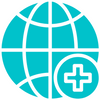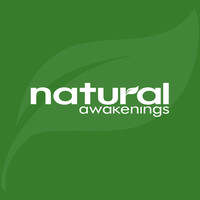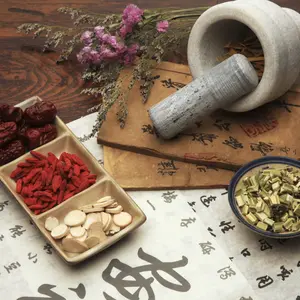

Traditional World Medicine

Traditional World Medicine
Traditional World Healing Wisdom: Lost Practices Gain New Respect
With time-tested wisdom and natural roots, traditional and Indigenous medicine has been an integral resource for centuries in communities around the world. According to the World Health Organization, 88 percent of all countries are estimated to use traditional medicine, such as herbal remedies, acupuncture and shamanism. The contribution of these practices is increasingly being recognized by Western medicine, especially in collaboration with integrative, holistic and regenerative medicine. The pandemic prompted renewed interest in traditional treatments, and incorporating them into wellness and healing modalities is easier and more valuable than ever.
Herbalism
Herbalist and spiritual coach Lucretia VanDyke integrates rituals, plant-spirit meditation, holistic food and ancestor reverence into her practice. An expert on Southern folk healing, VanDyke notes in her book, African American Herbalism, that Indigenous practices were never lost, but people had to go underground for fear of persecution.
“Herbal and sacred ceremonial practices of enslaved people of African descent were highly regulated or banned by the United States government in an effort to control the people most affected by colonization,” she explains. “In the mid-18th century, Virginia and South Carolina made it a capital offense to practice herbalism, resulting in harsh punishment or even execution if found guilty. Additionally, in 1883, the U.S. Department of Interior came up with the Code of Indian Offenses, which implemented laws that applied only to Native people until 1978. They were punished for dances and feasts by imprisonment or withholding food rations for up to 30 days.”
Noting a resurgence of these once-forbidden practices, VanDyke adds, “Today, I see people trying to branch out on their spiritual journey and seeking sources outside their Christian upbringing to answer questions within themselves with practices like herbalism and African traditional religion coming more into the mainstream.”
Linda M. Conroy, MSS, MLSP, is an educator, herbalist and community organizer who dedicates her life to connecting with the green world. She is the founder of two annual gatherings: the Midwest Women's Herbal Conference and the Mycelium Mysteries Women's Mushroom Conference. She also provides herbal education, workshops and individual consultations through her Wisconsin-based business, Moonwise Herbs.
“Herbalism is a practice where people connect and work with plants for healing and nourishment,” she says. “Plants, herbs and mushrooms have been around long before we have and provide an innate connection to the earth. Everyone has ancestors that grew and foraged for their own food, and we remember that in our being. It’s a different experience from buying a plant or pill from the store shelf.”
Misconceptions about herbalism are common in America, Conroy asserts. “In other countries such as Cuba, Germany and China, conventionally trained physicians still learn about more than 50 herbs in their training, but the United States all but abandoned herbalism after the development of antibiotics and pharmaceuticals,” she explains. “The pandemic has helped spawn a resurgence of interest, with people increasingly disappointed by Western medicine and turning to herbs for respiratory support, stress management and other conditions.”
Conroy stresses that working with herbs is both an art and a science. Learning their unique properties is key. “In order to be truly effective, it’s imperative that people know how to properly choose and use the correct herb for each situation. This includes being mindful of the dosage, method of delivery and sourcing. Herbs are much safer than most things out there, and with the right assessment skills, they can be truly transformative,” she says.
Another recommendation is to establish a wellness routine that incorporates herbs as maintenance to remind the body of their healing value. “Herbs are not drugs but can work in synergy with them. Many common ingredients can be used every day, such as a stinging nettle infusion to nourish the kidneys and lungs, and oats to fortify the nervous system,” Conroy says. “Acquiring our herbs and foods from local sources also strengthens our connection to the plants. Most things we need, such as garlic, cabbage, eggs and raw honey, we can find in our own garden, from neighbors or at a farmers market.”
Energy Healing
Billie Topa Tate’, a member of the Mescalero Apache tribe, is founder of MSI Wellness, in Evanston, Illinois, and author of the upcoming book, Spirit Guide Invocations: Seeking Wisdom from Sacred Helpers. Dedicated to creating a sacred space one person at a time through her Indigenous teachings, she is a mentor, teacher and healer. Her work has been shared by several universities and publications.
Although Indigenous healing practices do not have scientific studies to support their efficacy, they do have the observational and traditional support of her people, Topa Tate’ says. “The Apache learned medicinal properties from the plants and honored the position of being stewards of the land,” she asserts. “We learned from our virtuous elders that plants provide us with medicine and food, as well as spiritual qualities, such as smudging, essential oils and incense, which help to cleanse the body, mind and spirit.”
According to Topa Tate’, a shamanic journey is a visit to the energy world and can lead someone to insightful wisdom regarding their life’s purpose. “The spirit world provides a release of the thoughts that limit us and brings us into a realm where we can be guided by higher thought,” she explains. “Visiting the spirit world with proper guidance allows us to access the worlds of healing, wisdom, angels, the past, the future and even the symbolic energies of our present lives through our mind. Another way to find this release is to understand that words are energy carriers and can provide our mind, body and spirit with a source of enlightenment. We do this through our drumming songs and ceremonies, but also by becoming more aware and harnessing the power of words as medicine in everyday actions.”
Energy work can help us reconnect with that part of ourselves that facilitates healing, says Topa Tate’. “I recommend beginning the day with a five-minute morning ceremony that gives thanks to the creator for a beautiful day and invokes our helpers to offer assistance with particular projects. As a healer, it is important to teach people how to manage their stress with more productive platforms, such as meditation, nature walks and seeking out their life’s purpose. There is a misconception that only Native people can do this energy work, but we are all one family and can learn how to integrate the natural wellness that the Native people have used for centuries,” she explains.
Traditional Chinese Medicine
Traditional Chinese Medicine (TCM) is based on the philosophy, experiments and experiences indigenous to Chinese culture. It has been practiced for more than 2,500 years and is used for health maintenance as well as the prevention, diagnosis and treatment of physical and mental illness. According to Dr. Heming Zhu, NCCAOM, a board-certified acupuncturist and Chinese herbalist, author, educator, scientist and founder of Harmony Acupuncture and Chinese Medicine, in Maryland, the basis of TCM lies in the belief that the human body is a holistic system deeply connected to the universe.
“TCM is influenced by the flow of vital energy called qi. To restore the balance of qi and gain the harmony of life’s paired aspects known as yin and yang, TCM practitioners use various techniques, including acupuncture, moxibustion [burning herbs at acupressure points], herbal medicine, massage, qigong and dietary therapy,” Zhu explains.
Zhu says that TCM modalities fit into either a physical therapy or chemical therapy category and can be introduced for regular maintenance. “Acupuncture is commonly used for addressing fatigue, stress, pain, gastrointestinal issues, arthritis and improving overall well-being. Cupping is beneficial for relieving stress and muscle soreness. Tui-na, a form of therapeutic massage, is used for musculoskeletal disorders, digestive issues, pain and more. Gua sha helps manage stress and alleviate muscle tension and pain. Moxibustion can boost energy, improve digestion and address cold-related ailments. Qigong and tai chi are gentle, mind-body exercises that reduce stress and promote relaxation and overall mental well-being. Chemical therapy includes herbal medicine and dietary therapy to emphasize the connection between food and health,” he says.
TCM can be incorporated into an established wellness routine, and Zhu offers a few guidelines to ensure the best results. “People should seek education on the basic principles of TCM and be intentional not to judge it by Western medicine standards. They should find a licensed and experienced TCM practitioner and keep an open mind in initial consultations. Simple TCM practices, such as mindful breathing, gentle stretching or drinking herbal teas, can be incorporated into a daily wellness routine, and lifestyle changes, such as sleep routines and stress management, are part of the healing process,” Zhu says.
Emotional Healing
“There are multiple factors to illness, but often our emotions and trauma, either intergenerational or personal, are at the core,” VanDyke says. “Creating ceremonies based on the old ways gives you the strength to show up for yourself and makes it a little easier to move through the experience. Grief is a multilayer process, and it takes a holistic approach to co-create a path to a new normal. Our emotions are like invisible chains that bind us in a trauma loop, and having support for that is important. Nurturing the spirit is one thing that Western medicine does not talk about. I find that laughter, joy, pleasure and feeding the child-like spirit in us helps with this when life gets heavy. Ask yourself how you prioritize joy, and create your own rituals that center traditions while honoring your true self.”
Carrie Jackson is a Chicago-based freelance writer. Connect at CarrieJacksonWrites.com.
Original article published at Natural Awakenings


 By
By







